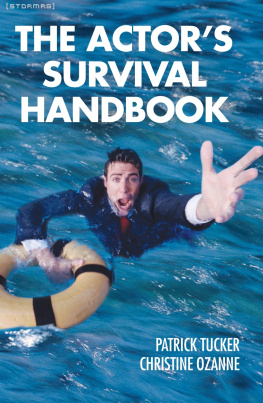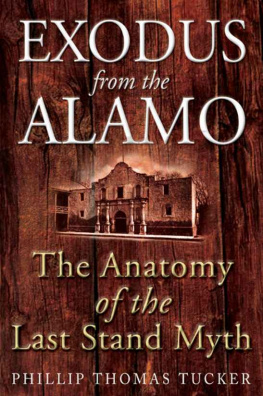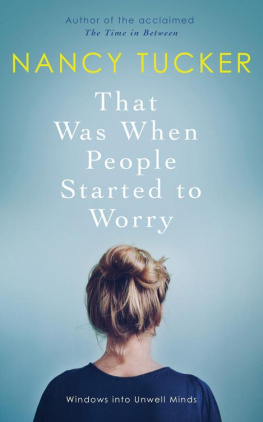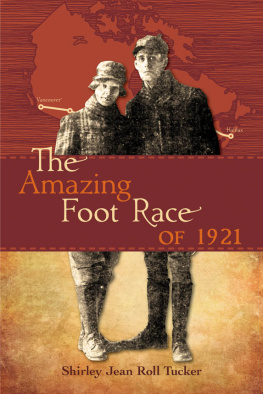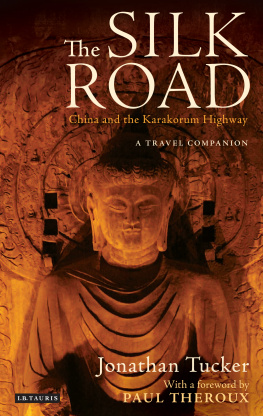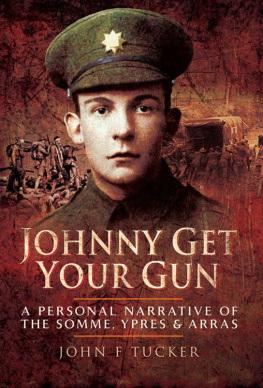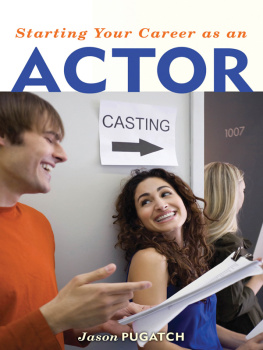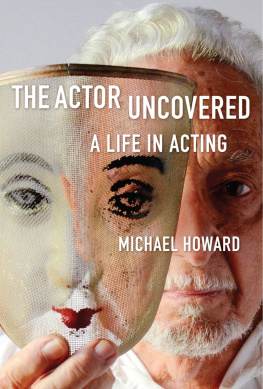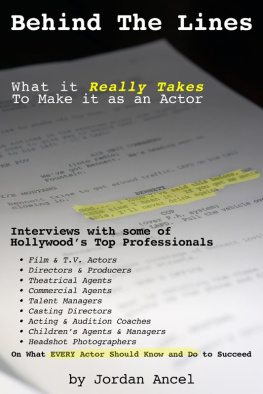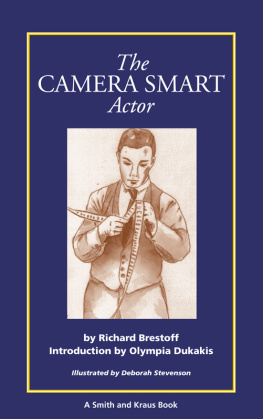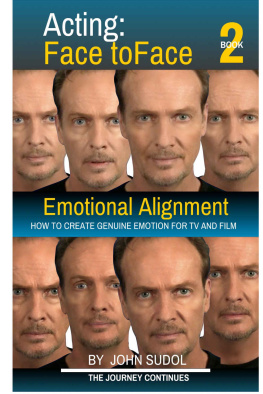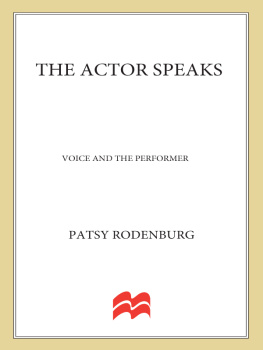
THE ACTORS SURVIVAL HANDBOOK
Patrick Tucker and Christine Ozanne

Published in 2005
by Routledge
2 Park Square, Milton Park, Abingdon, Oxon OX14 4RN
Simultaneously published in the USA and Canada
by Routledge
711 Third Avenue, New York, NY 10017, USA
Routledge is an imprint of the Taylor & Francis Group, an informa business
2005 by Taylor & Francis Group, LLC
International Standard Book Number-10: 0-87830-174-7 (Hardcover) 0-87830-175-5 (Softcover)
International Standard Book Number-13: 978-0-87830-174-4 (Hardcover) 978-0-87830-175-1 (Softcover)
No part of this book may be reprinted, reproduced, transmitted, or utilized in any form by any electronic, mechanical, or other means, now known or hereafter invented, including photocopying, microfilming, and recording, or in any information storage or retrieval system, without written permission from the publishers.
Trademark Notice: Product or corporate names may be trademarks or registered trademarks, and are used only for identification and explanation without intent to infringe.
Library of Congress Cataloging-in-Publication Data
Catalog record is available from the Library of Congress

| Visit the Taylor & Francis Web site at http://www.taylorandfrancis.com and the Routledge Web site at http://www.routledge-ny.com |
Dedicated to Artistic Directors everywhere (in the hope they might give either of us a job)
SEE also: ATTITUDE and WHATEVER WORKS
Contents
We would like to thank the following for permission to include quotations from their publications:
Extract from Bedroom Farce from Three Plays by Alan Ayckbourn published by Chatto & Windus. Copyright 1989. Used in the United States by permission of Grove/Atlantic, Inc., and in the United Kingdom by permission of The Random House Group Limited.
Extract from Present Laughter from Coward Plays 4 by Nol Coward published by Methuen Publishing Limited. Copyright The Estate of Nol Coward.
Extracts from Signpost to Murder by Monte Doyle. Reproduced by permission of The Agency (London) Ltd, Monte Doyle. First published by Samuel French. All rights reserved and enquiries to The Agency (London) Ltd. 24 Pottery Lane, London W11 4LZ info@theagency.co.uk
Extracts from Picnic and Bus Stop. Reprinted by permission of International Creative Management, Inc. Copyright Picnic 1953 and Bus Stop 1955 by William Inge.
Extract from A Few Good Men. Copyright 1989 by Aaron Sorkin. Reprinted by permission of William Morris Agency, Inc. on behalf of the Author by special arrangement with Samuel French, Inc.
We would also like to thank Boston Universitys School of Theatre Arts and Londons Royal Academy of Dramatic Art, for training us; William Germano at Routledge for inspiring us to write this book; and our friends for their insights: John Colclough (for his analysis of agents), Constantine Gregory (for the anecdote on accents), Hedli Niklaus (for factual details on radio acting), Kathleen Bishop (for practical costume advice), and Carolyn Jones (for all her valuable comments on the manuscript).
This book is for actors who feel they are drowning in a sea of troubles and need a life belt.
This is also a book for actors who want to know more
About the craft of acting
About the techniques of acting
About what to do when
Whether you are starting offthe moment when you wonder if you really want to be an actoror whether you are staring at the mirror wondering if you should continue, we designed this book to give you easy-to-understand articles full of facts and nuggets of information about how to tackle the realities of being an actor and of giving a good performance. This is not a book full of theoretical philosophiesthere are many other books on the shelves that are concerned with those. We wish to tackle the practicalities.
We are not dealing with the details about how to lay out a resume or about which individuals to contact for various jobs, for that will vary from area to area and will change over time. No, we are dealing in this book with all those problems and the solutions to them, which are about the craft of acting.
We are writing jointly, but when we have a very different slant on a topic, or have a specific anecdote, then we identify which one of us is speaking.
The Actor Says:
My personal contribution to this book is based on continuous experience of being a professional actor since 1958. I have not only been employed to act, but have extensive knowledge of the trials and tribulations of being out of work and all that trying to get work entails. I have endeavored to cover the realities of being in the entertainment industry as well as the techniques required to produce the goods under some of the most difficult circumstances. Professional actors have nothing but themselves to sell, and only their bodies as a tool. Look after it (the body that is), you will need it to be in a healthy state, even in old age, if you are serious about being an actor full time and all your life: Good luck!
The Director Says:
Actors often come to me for advice, even though they are working with another perfectly good director. When asked why they come to me, the answer is refreshingly simple and flattering: You give us answers we can understand, and notes that we can immediately put into practice. I know this book will do that for you too.
The modern actor cannot know when suddenly she will be catapulted from doing a day here and a day there in a series of little acting jobs to a long run in the theatre, a continual role in a television series, or a role in a significant movie that can change her acting situation forever. The actors job is to be ready for it, and part of the job of this book is to prepare the actor for these possible eventualities.
When we need to choose between using the words he or she, we alternate from topic to topic to share them out. There is no relevance to the topic being addressed as to whether we use the male or female, simply an acknowledgment that there is no good word to use that is evenhanded between the genders.
How to Use This Book
Any book that has an alphabetical list of topics runs the risk of being difficult to navigate, because you the reader will not always know the name the authors have given to the particular article you are looking for. So the first thing to do with this book is to look up what you are interested in, to see if it has a heading attached to it.
If you cannot find what you are looking for under the alphabetical headings, then consult the Family Trees. The various topics are sorted into eight different Family Trees, which have been arranged into branches, twigs, and leaves. Go to the tree that covers the area of your search, and you can follow a path along the branches to get to the section you are interested in and to find the name of the article that will help you. You also can see the headings of the other topics that are close to the one you want. If the article relates to several different areas of this huge subject of acting, then we included it in a different Family Treewherever we think you will look for it.
Next page
